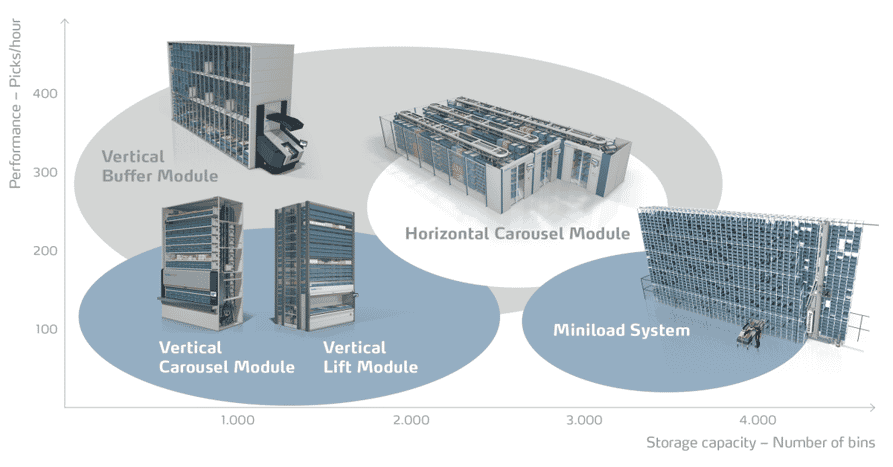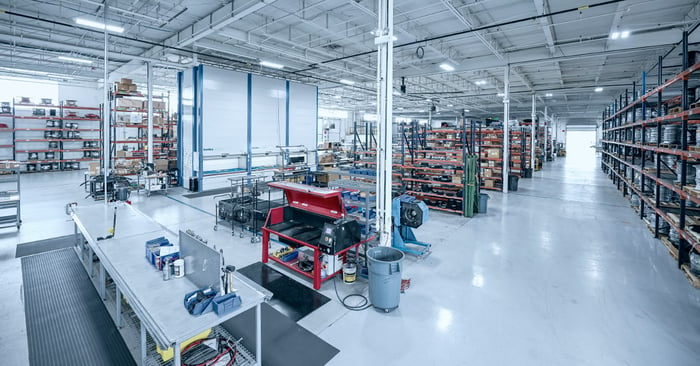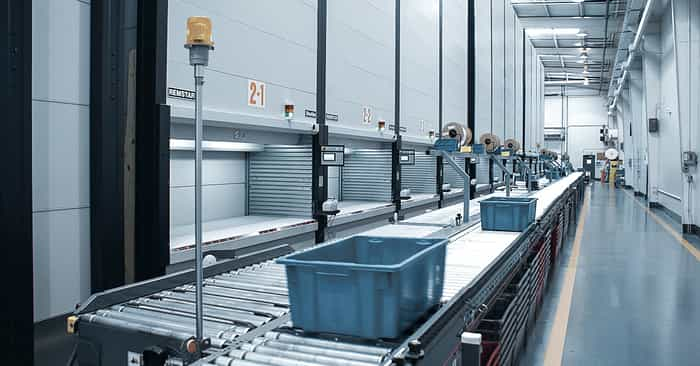There are so many order picking technologies available to support inventory management and order fulfillment tasks—ranging from fairly simple to highly automated. No matter the solution, the basic elements of the order picking system are the same. At their most fundamental, these systems support associates and the facility in the identification, tracking, verification, organization, storage, location, sorting and handling of inventory. With so many options available, how do you know what you really need? It comes down to five fundamental technologies and making them work together.
1. Inventory Management Software
Software is the brains of the system—it keeps records of all the individual SKUs, their quantities and their storage locations as they enter, move within and exit the warehouse or distribution center. Basic warehousing systems can use spreadsheet software for this, but a more advanced operation will need a higher level of supporting order management software.
Inventory management software can be standalone, but often is a part of the operation’s warehouse management system (WMS) software that coordinates, manages and directs the handling of inventory and people throughout the various warehouse processes. It documents inventory information at receiving, then directs putaway, slotting, picking, packing, order consolidation, shipping, manifesting, and all other functions related to picking orders. You’re going to need some level of software.
2. Storage Systems
Used to physically store goods, there are many different storage systems available, from static to automated storage and retrieval systems (ASRS) that present items to operators in a goods-to-person methodology. The heart of the order picking system is usually a combination of:
-
Static Shelving. Convenient and cost effective, open- or closed-side shelving is used to store smaller, lightweight and hand loaded items, typically in cartons or organized in reusable plastic parts bins.
- Pallet Rack. Engineered for storage of palletized loads or cartons, these systems are generally accessed with forklifts. They can be sub-divided with roller track to create flow-rack for picking of smaller items. They can also be engineered with different levels of flooring or as part of a mezzanine or work platform to create pick modules where workers pick items at different heights and vertical locations.
- A-Frames. Self-contained and automated, this machine’s vertical storage channels dispense small, individual items at high speeds to totes or containers passing underneath it via conveyor.
- Horizontal Carousel Modules. Consisting of bins mounted on an oval track that rotate horizontally to deliver stored items to an operator. These self-contained, dynamic ASRS save up to 60% of floor space when compared to standard shelving and rack and present items to operators for goods-to-person picking.
- Vertical Carousel Modules. Comprised of a series of shelves that rotate around a track—similar to a ferris wheel—these ASRS quickly deliver stored items to an ergonomically positioned work counter at the operator’s command. When compared to static shelving and rack, they save up to 75% of floor space.
- Vertical Lift Modules (VLMs). An enclosed ASRS that incorporates of two columns of trays with a central inserter/extractor that automatically locates and retrieves stored trays from both columns, then presents them to the operator at a waist-high pick window. These systems save up to 85% of floor space compared to static shelving and rack.
- Unit-Load ASRS. Machines that automatically store and retrieve pallet loads from long, narrow aisle of storage rack with a telescopic, crane-based device that travels to and from specific storage locations.
- Mini- and Micro-Load ASRS. Also crane-based, these smaller versions of Unit-Load ASRS handle correspondingly smaller, lighter loads, typically held in trays, reusable totes or cartons.
- Robotic Shuttles. Handling cases, totes or trays, this ASRS utilizes independently moving robotic shuttles inducted into the system. The shuttles travel independently from level to level, riding on narrow rails at each storage level to retrieve stored items at high speeds.
Robotic Cube Storage. Using robotic cube storage, all inventory is placed into bins and stacked inside a cube. Smart robots work at the top of the cube to shuffle, sort and retrieve bins and deliver them to a workstation (port) as needed.
Vertical Buffer Modules. A bin handling system designed for smaller applications that consists of enclosed shelving and a movable mast running down a center aisle for picking and storage of totes. The unit works ahead of the operator and to queue up the next pick.
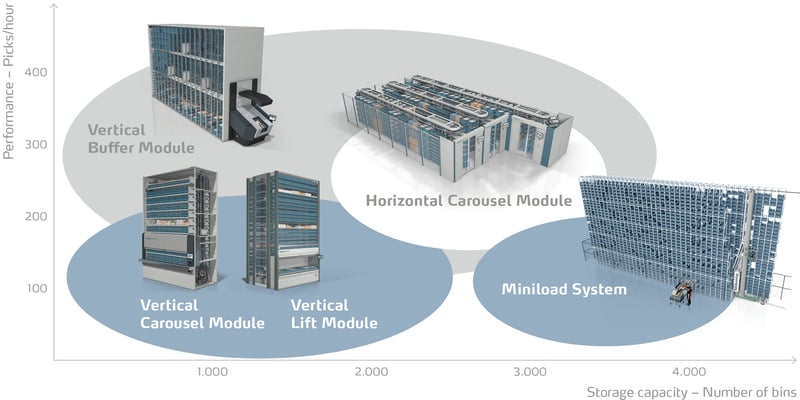
3. Transport Systems
- The next piece to consider is how to move the product throughout the warehouse. Ranging from manual to highly automated, one or more of the following transportation equipment and technologies can be used to move inventory within the warehouse, to and from receiving, storage, forward picking, replenishment, consolidation, packing, and outbound shipping. Many operations use multiple transportation systems depending on the size and weight of the items or loads being moved.
-
Pallet Jacks. These manually operated forked vehicles move a single pallet load stored at floor-level.
- Hand Trucks and Carts. Manually pushed via a handle or towed behind a vehicle with a hitch in a series known as a train, these units feature two to four wheels and are used to move non-palletized, unstacked loads of cartons or totes. Some carts are outfitted with several levels of shelves to hold pick destinations, including totes or shipping cartons.
- Lift Trucks. Classified into seven separate categories by OSHA, powered industrial trucks move palletized loads. They’re powered by batteries, fuel cells, liquified petroleum gas (LPG), gasoline or diesel and are configured for a variety of indoor and outdoor load handling applications. They are often used to load and unload vehicles, stock storage locations and retrieve pallet loads for replenishment.
- Fixed Transport Systems. Conveyors can be oriented horizontally, vertically or on an incline, moving loads ranging from individual products to cases to full pallet loads from one area to another within an operation. Typical picking applications include placement between pick zones for transfer of pick totes from one picker to the next, to transport completed picks to consolidation and pack out, and from packaging to shipping docks.
- Automatic Guided Vehicles (AGVs). Computer controlled, wheeled load carriers that navigate on-board or towed loads throughout a facility autonomously. They can be used to follow a picker who places picks onto a pallet transported by the AGV, for example.
- Autonomous Mobile Robots (AMRs). Computer controlled and smaller than AGVs, AMRs transport smaller loads throughout a facility autonomously. They can be used to transport static shelving holding inventory from storage locations to pickers, or to transport picked items from one location to another.
4. Automatic Identification and Data Capture (AICD) Systems
These technologies are designed to automatically collect data from an object and transfer it into a computer system, without manual data entry. These systems ensure the data accuracy and improve operator productivity in order picking environments. Used to track items automatically and reduce manual entry, these technologies enable fast and accurate identification of required picks, including single units, cases, pallets, totes, and their storage positions. No matter the complexity of your order picking, you want to implement some type of automatic data collection to avoid costly data errors.
AICD Systems Include:
-
Bar Code Scanning. Barcode labels are very common and can be scanned by handheld or fixed-location radio frequency (RF) scanners or camera-based imagers to instantly validate the information the code contains, then transmit that data another system for processing and use (such as triggering pick indicator systems).
-
Radio Frequency Identification (RFID). Information is coded into a small tag or label using an integrated circuit and antenna. Data is then captured by an RFID reader using radio waves and transferred to a host data system. Unlike barcodes, data from an RFID tag can be captured without line-of-sight.
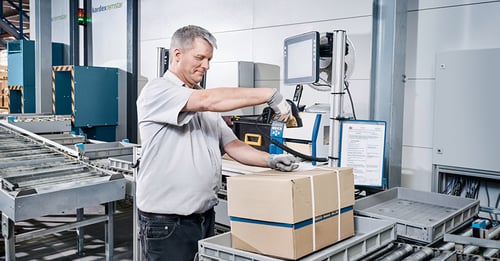
5. Pick Indicator Systems
Pick indicator systems help operators quickly and accurately locate required items. They direct the operator to a specific location and provide information for the task to be completed. Pick indicator systems are paperless and allow the operator to work hands-free result in extremely high accuracy rates, reduced training time and faster picking speeds.
Types of pick indicator systems include:
- Light Directed. pick-to-light and put-to-light systems are a series of modules with colored lights and (sometimes) alphanumeric displays mounted to the face of a storage location or pick destination (such as on a put-wall or tiered picking cart).These light displays direct an operator to a storage location and provided information to complete a task such as pick quantity or part number. Alphanumeric displays, buttons and lights can also be used in reverse to direct put tasks – creating a Put to Light system. Triggered by a barcode scan, the lights illuminate, blink or display a message indicating the location of the pick (or put). The picker presses a button to extinguish the light and confirm the pick.
-
Voice Directed. Voice-picking systems consist of a wearable headset where the operator is told by a computerized voice (in his or her native language) what item to pick and how many. The operator confirms the pick by speaking back into the headset.
- Vision Directed with AR Glasses. Operators are guided through the picking process by information displayed on wearable smart glasses (such as Google Glass or VuzixM100) including production location, pick quantity and put placement. This developing technology is starting to make its way into warehouses globally.
Create Your Perfect Picking System
Combining these five elements will create an order picking system. The challenge is making them all work seamlessly together and continuously tweaking the system for the best efficiency.

